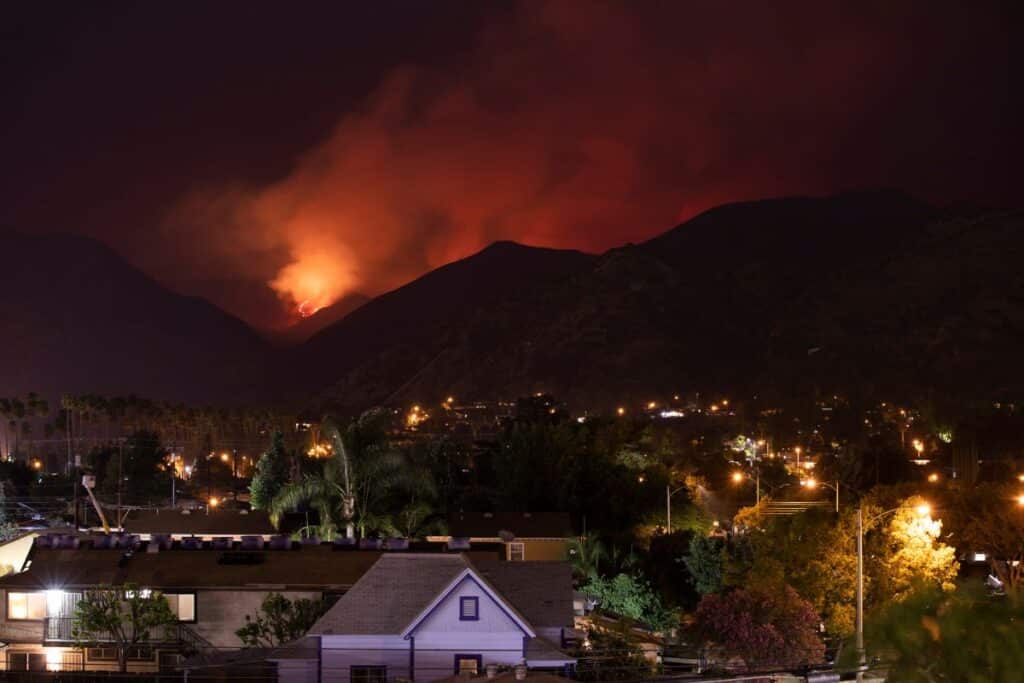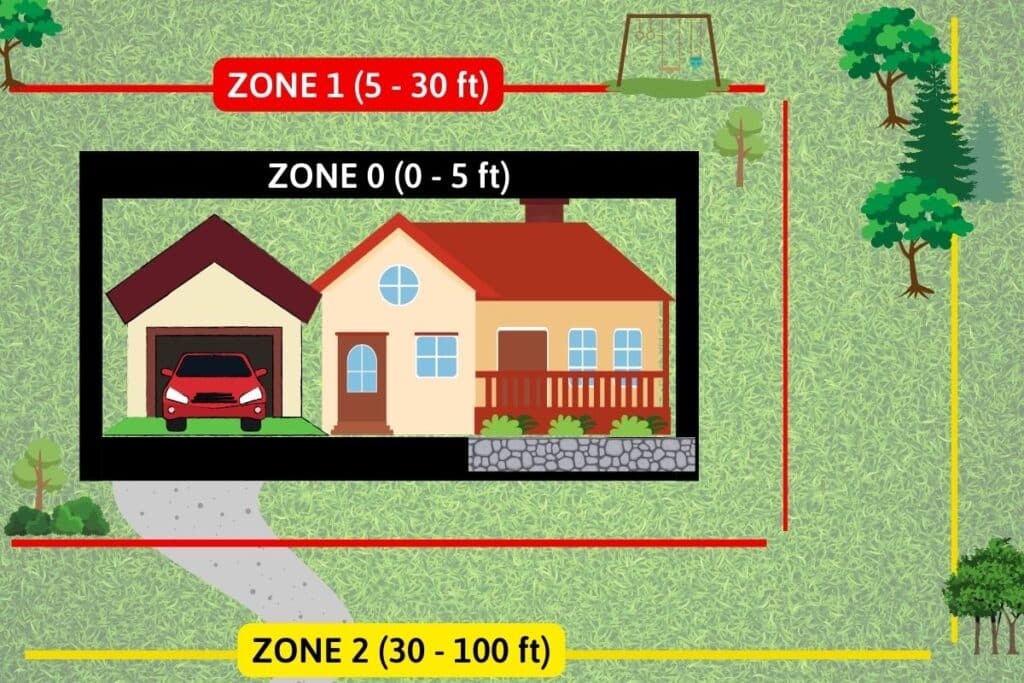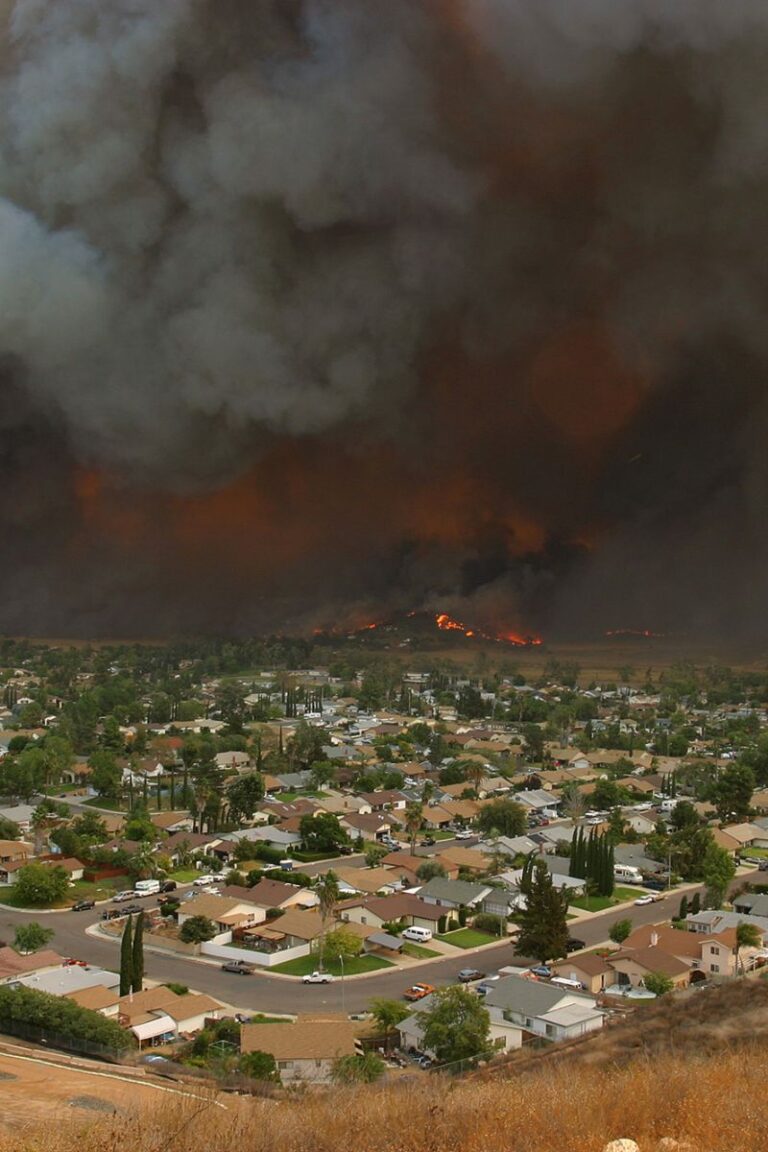
How to Get an Emergency Supply of Medication for Preparedness Purposes
How to get an emergency supply of medication without a prescription. Jace is a great way to keep medicine for your family in your emergency preparedness plan.

Be honest, have you ever heard the phrase defensible space?
I know a lot of people who haven’t, so you wouldn’t be in the minority. When it comes to protecting your home from wildfires, there’s one strategy that can make a significant difference – creating a defensible space around your home. By implementing this crucial fireproofing measure, you can enhance the chances of your home surviving in the face of a raging inferno.
In fact, this is so important that in California (where I live), there is actually a law that requires 100 feet of defensible space around homes/structures.
Whether or not you live in a wildfire prone area, this is important information to know. Your knowledge could help family or friends, or maybe someday you’ll find yourself moving to such a place and it will become part of your wildfire safety plan.
Keep reading to learn the importance of a defensible space, the key principles behind it, and tips on how to create it around your home.
**This post contains affiliate links, which means if you click on a link and make a purchase, I may make a small commission at no extra cost to you.
Defensible space refers to the area around your home that has been cleared, modified, or designed to reduce fire risk. This includes maintaining a buffer zone that is free from highly flammable materials, such as landscaping and combustible debris.
Not only does a defensible space provide firefighters with better access to your property, but it also helps slow down the spread of fires, which reduces the likelihood of significant damage to your home.
Plus, one of the perks of emergency preparedness is that it gives you peace of mind, knowing that you have taken proactive steps to protect your property and loved ones.
When you hear talk or read articles about preparing your home for wildfires, you will often hear about defensible space zones. These zones start at the home and work their way out to 100 feet or to your property line, whichever comes first. So let’s just get a basic understanding of the three zones:
This includes the structure of your home and up to 5 feet out from it.
This zone includes everything within 5-30 feet of the perimeter of your home.
This area includes everything within 30-100 feet of the perimeter of your home.

Creating a defensible space requires careful planning and execution. Zone 0 (aka the ember-resistant zone) might just be the most important zone. You do not want anything in this area that could ignite and spread the fire to your home.
Here are some tips and guidelines to help you implement this fireproofing measure effectively:
This will have you looking out over your property up to 100 feet (or to your property line).
In addition to creating a defensible space, choosing fire-resistant materials for your home can further enhance its fireproofing capabilities. Here are some considerations when selecting materials:
Effective landscaping plays a crucial role in fire prevention and protection. Here are some landscaping practices to consider:
Creating a defensible space is not a one-time task; it requires regular inspections and maintenance. Here are some steps to ensure the effectiveness of your defensible space:
Conduct regular inspections of your defensible space to identify any potential hazards or areas that require attention. Look for overgrown vegetation, accumulation of debris, or any changes in the surrounding landscape.
Regularly remove any flammable materials that may have accumulated within your defensible space. This includes fallen leaves, branches, and other combustible debris.
Ensure your irrigation system is functioning correctly and providing adequate water to your landscape. Regularly check for any leaks or malfunctions that may compromise the fireproofing capabilities of your defensible space.
Stay updated with local fire regulations, guidelines, and recommendations. This allows you to adapt your fireproofing strategies based on changing conditions and new information.
Implementing a defensible space around your home offers numerous benefits in protecting your property and community:
By creating a defensible space, you significantly increase the chances of your home surviving a wildfire. The cleared area acts as a barrier, slowing down the spread of fires and reducing the risk of your home catching fire.
A well-maintained defensible space provides firefighters with better access to your property. This allows them to effectively combat the fire and protect your home.
By removing highly flammable materials and maintaining a clear buffer zone, you reduce the risk of fire spreading to your home and neighboring properties.
Knowing that you have taken proactive steps to fireproof your home can provide peace of mind. It allows you to feel confident in the resilience of your property during wildfire seasons.
If you require assistance with fireproofing your home or need additional resources, consider the following options:
The Information Hub is a great way to keep all of these resources in one, easy-to-find spot.
It’s definitely worth checking out!
Preparing your defensible space is something you can do now to protect your property and loved ones from the devastating effects of wildfires. Remember to include them in the plan!
By understanding the importance of fireproofing, implementing defensible space guidelines, choosing fire-resistant materials, and maintaining your landscape, you can significantly enhance the chances of your home surviving a wildfire.
Don’t wait for disaster to strike!


How to get an emergency supply of medication without a prescription. Jace is a great way to keep medicine for your family in your emergency preparedness plan.

Why you should schedule an emergency preparedness weekend every 6 months, and what you should be doing, reviewing, rotating, and maintaining. Free printable checklist!

Berkey water filters are THE BEST water filters, not only for emergencies, but for everyday use. They are so good, they are classified as a water purifier, which is a step up from a filter!
